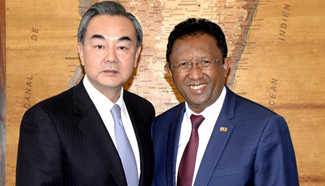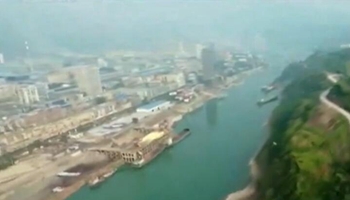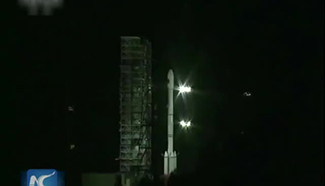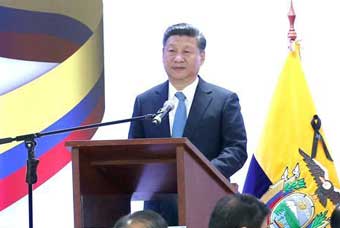by Xinhua writer Zhu Junqing
BEIJING, Jan. 10 (Xinhua) -- With the USS Carl Vinson battle group heading toward the Western Pacific, the United States is completing its deployment of three carriers to Asia, putting on another muscle show and making waves again in the South China Sea.
According to foreign media reports, the U.S. Navy is deploying a third Nimitz-class supercarrier in Asia to add to the fleet of two carriers already patrolling the South China Sea, aiming at boosting its naval air forces in this part of Asia.
Facts again show that it is the United States along with its regional allies that have never stopped stirring up trouble in peaceful waters and militarizing the South China Sea.
Over the past decades, certain countries in the region, under the U.S. double standard, have continuously been deploying heavy weapons on illegally occupied islands and reefs that actually belong to China.
The United States, self-proclaimed world police, itself has developed a habit of putting on a military show of force on China's doorstep. Even though the region is thousands of miles away from its soil, U.S. warplanes and warships have been patrolling dangerously close to Chinese territory.
Such behavior is rooted in the mentality of U.S. imperialism and hegemony. To contain China's rise and maintain its world leadership, the U.S. administration launched its "Asia-Pacific Rebalance" strategy in 2009, with the South China Sea issue as one of the starting points.
Similar to its previous misdeeds in Afghanistan, Iraq, Libya and Syria, the U.S. intervention has brought about nothing but heightened tension in the South China Sea, and enticed U.S. allies to take more provocative measures to press for their illegitimate territorial claims.
In fact, China has the full wisdom and ability to address the South China Sea issue. China and the countries concerned have found a way that not only respects international law, but also leads to the effective management of disputes.
So far, China has solved border issues with 12 of its 14 land neighbors with over 20,000 km of borderlines delineated and demarcated, and set the maritime boundary in the Beibu Gulf with Vietnam.
China and the 10 Association of Southeast Asian Nations (ASEAN) countries signed the Declaration on the Conduct of Parties in the South China Sea (DOC) in 2002, in which all countries directly concerned undertake to resolve their territorial and jurisdictional disputes by peaceful means through friendly consultations and negotiations.
All in all, China hopes to work with other countries to make the South China Sea a sea of peace, friendship and cooperation, not a hotbed of war.














